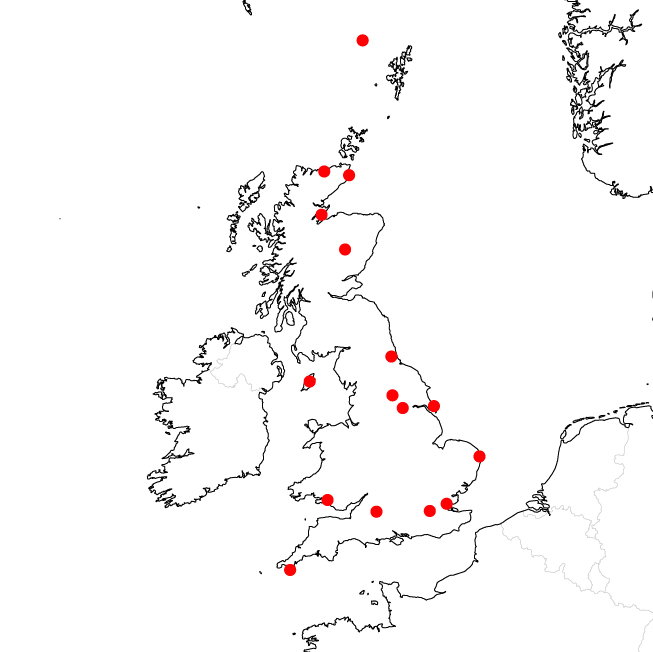Air, Architecture + Other Climates
[50.0°
to 61.0°
N : Carbon Transitions] - 20/21
John Cook, Ben Pollock + Laura Nica
![Construction of the M4 flyover through Port Talbot, Wales, home to the Tata Steelworks factory, the largest steel plant in the UK (Image: Port Talbot Historic Society)]()

About
Last year DS18 commenced its investigations into the topic of air, and its role as vehicle and signifier of energies, moistures and toxins amongst earth’s atmospheric circulation systems, in particular the Polar Vortex. We studied its properties as the reconfiguring agent of territory and ecologies within the High North, whilst exploring ways that architecture could shape, be shaped by, or integrate amongst this invisible globally circulating matter. Continuing our exploration around air, its relationship within transforming atmospheres and our degrading climate, we narrow our focus to one of its more negligible but most critical ingredients - both the ‘building block of life’ and measure of our climatic decline; carbon.
Carbon
>>> Carbon as Fuel / Form <<<
Carbon is a transformative substance of both its own state and the societies enabled around it. The extraction of hydrocarbons as a raw material and energy source has been the catalyst of humanities most significant and industrialised development over its history, resulting in our current fossil-fuel intensive energy paradigm. The extractive and processing capacity of human society has not only restructured social orders, developed and degraded economies, and lead to the current hierarchy of global power, but its abundant energy providing capacity and corresponding logistical possibilities has distributed and shaped the spatial configurations of our rural and urban settlements, informed new architectural typologies, and woven the fabric of our built environment. We live amongst the spatial expression of carbon and the reciprocal energy consuming cycles its rooted in, we now live in the paradigm of Carbon Form(1).
>>> Carbon as Toxin / Air <<<
As a product of our intensive fossil fuel consuming society, carbon is combusted and oxidised to become air-borne, a gaseous pollutant which melds amongst earth’s circulatory matter. Our imposition on earth’s natural carbon-cycles, now violently reordered and accelerated, not only directly affects the biological life on our planet but critically destabilises earth’s atmospheric composition. This chemical imbalance increases the earth’s potential to absorb solar radiance whilst trapping further heat energy, raising global temperatures and drastically interfering with earth’s climate and weather systems. It is widely known we now live in a time of human induced, and carbon facilitated, climate change.
>>> Carbon as Commodity / Economy <<<
As we become further enlightened to the destructive nature our interference with carbon has on the planet, the effects and processes surrounding it become yet another economic commodity. Rights to burn and the absence of carbon is now quantified, given value, taxed and traded as credits upon the ‘environmental-marketplace’. These mechanisms aim to control and limit emissions, but serve to enable an offsetting of responsibility, a financial buyout, open to typical corporate and political abuses(2). This approach maintains the view of nature and the environment as a commodity, to control, assign ownership, and profit from, a continuation of the capitalist values and practices that led us to this point.
We will consider carbon as this transformative entity, tracking its pathways and transitions between states, material type, energy and values - but also as a spatial organiser, a cultural driver, and political/economic agent.
1) Cynthia Davidson ; Elisa Iturbe Eds. (2019) Log 47: Overcoming Carbon Form, Anyone Corporation, p.11
2) See: https://www.theguardian.com/environment/2015/aug/24/kyoto-protocols-carbon-credit-scheme-increased-emissions-by-600m-tonnes
<full brief avaliable here>
Project Sites
![]()
Students
Year 1
Chantal BarnesDaria-Suzanne Donovetsky
Gary Chan
Justyna Lesny
Sully Muhammad
Muhtasim Mojnu
Year 2
Almudena Tesorero GarciaDenise Carcangiu
Hannah Pinsent
Helen Windsor
Jamie Williams
Katarzyna Maskowicz
Elizabeth Terry
Nikhil Berwal
Seni Agunpopo
Seungmin Lee
Special Thanks
Ben Ashby & Shahid Padhani @ ARUP’s Advanced Digital Engineering GroupGuest Critics
Alice Thomson (MATA Architects)Andreas Kӧrner (University of Innsbruck)
Andrei Jipa (ETH Zurich)
Andrew Madl (UTK Land Arch)
Anthony Boulange (UoW)
Ed Wall (University of Greenwich)
Calvin Sin (SCI-Arc)
Charity Edwards (Monash University)
Constance Lau (UoW)
Christina Nan (Future//Fields, TU/e)
Dhruv Gulabchande (HFM / Narrative Practice)
Finbar Charleson (dRMM + AA Wood Lab)
Fiona Grieve (Scott Brownrigg)
Fraser Morrison (Future//Fields, Architecture 00)
Iulia Stefan (Ground Lab, AA Research Fellow)
James Mak (dRMM)
Katie Dechow (Jo Cowen Architects)
Larisa Bulibasa (Project d'ARCHITECTURE)
Lindsay Bremner (Monsoon Assemblages)
Mitesh Dixit (DOMAIN Office & Columbia GSAPP)
Matt Rosier (Artist)
Michael O'Hanlon (DSDHA)
Oscar McDonald (Space Syntax)
Rachel Wakelin (GBY)
Toby Burgess (UoW)
Tom Benson (Senseable City Lab, MIT)
Vlad Tenu (AHMM)
